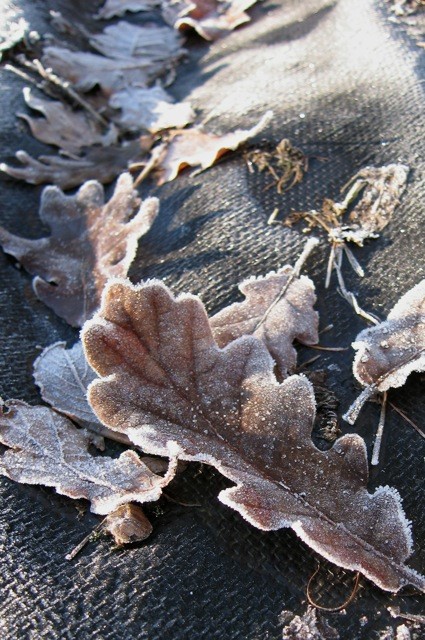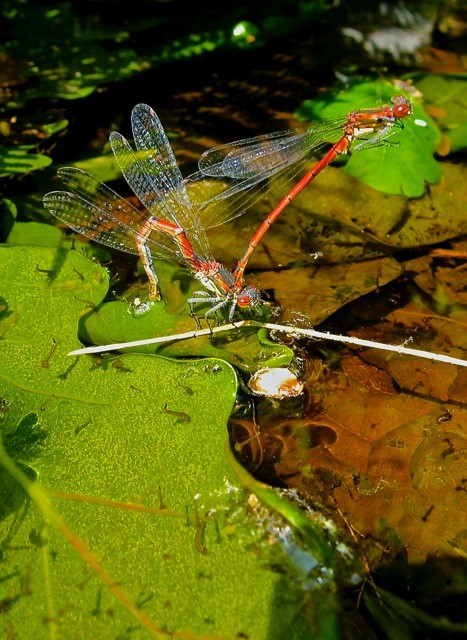A readily available mulch will put the heart back into your soil – without you needing to put your back into it.
It’s dragged on for long enough. That great day when I make, find or buy the time to push up my sleeves and ‘get on with it’ isn’t going to arrive any time soon – if indeed it ever does. In tandem, one of the greatest garden-saving, weed-deterring and job-postponing assets I’ve ever installed has now come to the end of its life.

In truth, it’s not so much that it’s outlived its usefulness – it hasn’t. It’s more that I’ve gotten sick and tired of looking at it. ‘A year or two’ has turned into… well, it’s too painful to tot them up, and I now want to gaze upon any colour other than black. The lizards might love basking on its sun-soaking surface in summer, and it’s adept at frying tough weeds to a crisp, but I now want it gone.
But above all else, as I adapt and match my gardening efforts to energy levels that I can’t go on kidding myself are still those of a 25-year-old, I want my soil back – without the hard graft of digging. I want to peel back the light- and rain-excluding layer that first smothered weeds, then kept them at bay. I want the sun to warm earth, not plastic (the reptiles can sunbathe on hot slate instead). I want to unleash the potential of parts of my blacked-out, terraced garden; I want to grow more plants. I want to do it with modest, steady effort, I want to start now, and I’ve found a low- to no-digging, slog-free way of doing it.

So the thick black plastic sheeting (it started life as a cover for road grit) is finally being rolled up. In a last nudge to remind me of what the soil beneath has been missing out on for so long, its boring black is now peppered with fast-rusting, frosted oak leaves.
Despite its dour colour, the plastic has been the stage for some memorable moments. How could I forget the damselflies that, one summer, courted, united and then laid eggs in ephemeral mini ponds formed on its surface? Or the sound of scurrying along the labyrinthine network of burrows that criss-cross the life-starved soil just beneath the sheet? Few sights are quite as awesome as watching flying ants emerging from under the sheet, rising in a shimmering plume into the beaks of swallows. It may not have improved the soil, but the plastic has been rain-free heaven for nesting voles, and solar-heated utopia for slow worms. But as these transient worlds end, a new and altogether more enriching one is about to be, literally, spread out.
My hassle-free, spade-free, soil-rescuing remedy comes in the form of chopped-up woody twigs and branches known – wait for it – as ‘chipped branch wood’ (CBW). Size matters here: the chips must be made from branches no more than 7cm (3in) in diameter at their thickest end. It’s this kind of wood that you see in piles along roadsides, where the thinner brash has been put through a noisy, high-powered shredder. I’ll be collecting some ready-shredded CBW locally, but I’ll mostly make my own using a ‘cut-and-crush’ electric shredder – one of the quieter types that draws twigs and branches into the cutting chamber and chops them into chunks. The resulting chips will be spread over the surface of the freshly exposed, unimproved soil, in a layer roughly 5cm (2in) deep. They can be forked lightly into the soil surface, but I won’t fuss with that. Next, I’ll scatter a couple of handfuls of mature leafmould over each square metre, to give a biological kick-start. What happens next is eye-opening, and has been proven through ongoing agricultural and forestry trials stretching back to the 1950s.

In woody trees and shrubs, the shoots and twigs furthest from the trunk – those on the outside of the plant which get the most light – are the parts which are richest in minerals, amino acids, proteins and enzymes. These thinner ‘greener’ shoots also contain the highest concentrations of the plant foods nitrogen, phosphate and potash, as well as calcium and magnesium. All of these are drastically reduced in thicker, woodier branches more than 7cm (3in) across, so use those for wood piles – or make a woodburner-owning friend smile. The best CBW comes from deciduous trees and shrubs, with oak being a favourite. Chopped conifers can be used, but keep them to no more than 20 per cent of the overall mix. Fresh chippings work best; if they’ve been heaped up and have heated up and then cooled down, they’re on the way to becoming compost and can be added to a compost heap or bin, used as mulch, or included in your DIY peat-free potting mix.
The alchemy of soil formation and enrichment (or pedogenesis as the boffins call it) begins the moment those fresh chips hit the ground. The fresh, sappy layer soon begins to feed soil fungi, moulds and myriad other micro-organisms. As the CBW is feasted on and broken down, soil life receives a boost; biological activity goes up several gears and more visible life, such as earthworms, increases. The soil I’m about to reclaim from its plastic tomb is raw and unimproved, so the scattered leafmould – imbued with the unseeable agents of decay that morph leaves into mould – will act as nature’s inoculant. All this happens without any back-breaking digging.

As the woody chips darken and decompose, as fungal mycelium run over and through them, they soon start to become part of the uppermost layer of the soil. They add plant foods, and ‘glues’ that help form crumbly soil that’s rich in dark humus – a stable form of soil carbon that can persist for tens, hundreds or thousands of years. The more they break down and become integrated, the richer and more diverse the soil’s flora and fauna become. The structure of the soil improves over time, along with its fertility. It’ll hold onto moisture in the dry times, and soak up rain during the wet. To go on building soil, all I need do is keep adding a fresh layer of CBW, while my spade gathers dust. Weed seeds are kept in the dark; any weeds which do appear can be easily yanked out. Birds will have a field day pecking in it for food, and it’ll be perfect habitat for slug-eating ground beetles, and for skittering wolf spiders. So that’s how I’m going to reclaim my soil and get it back up and running, top-down, by utilising the potential of chopped-up bits of young, sappy wood.
Late autumn or early winter is an ideal time to begin tapping into the restorative powers of chipped branch wood; boosting soil with your prunings is far preferable to squandering them on polluting, wildlife-unfriendly bonfires. So the great day is here. I’m finally rolling up my sleeves, along with the black plastic (it’ll live on as a compost cage cover), and getting on with it.
I’m getting my soil back, and my back’s loving it.
Text and images © John Walker
Find John on Twitter @earthFgardener


